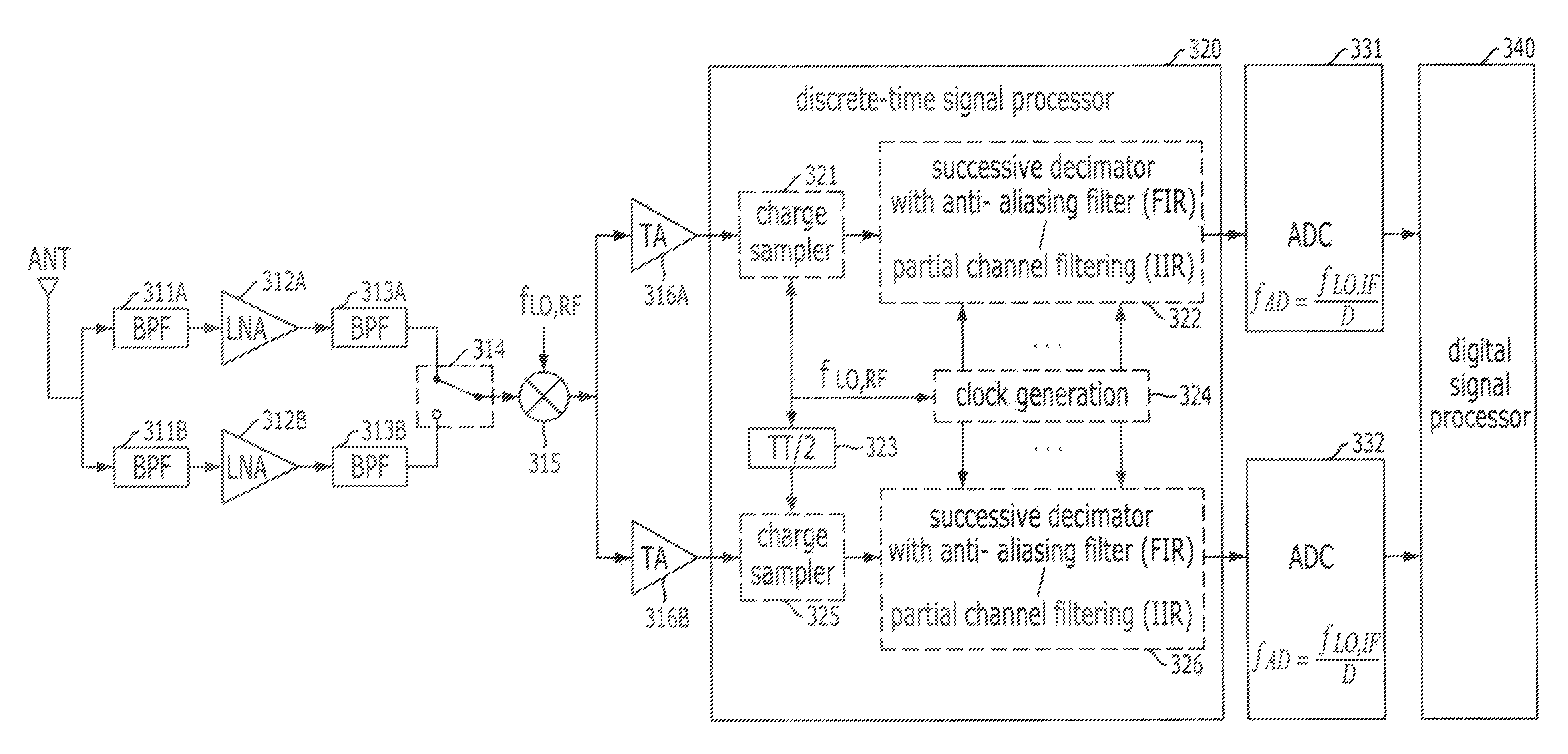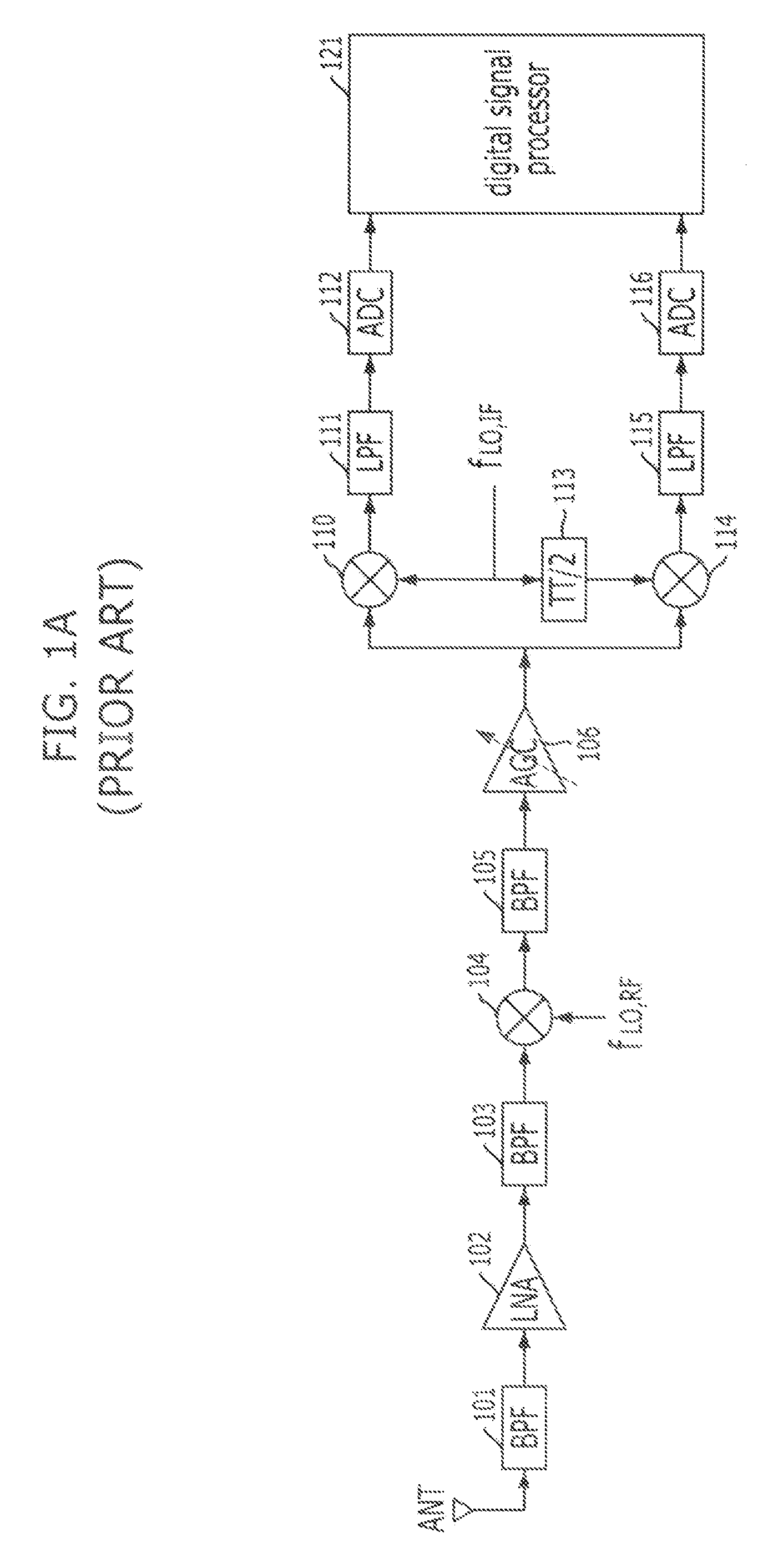Heterodyne receiver using analog discrete-time signal processing and signal receiving method thereof
a heterodyne receiver and discrete-time signal technology, applied in the direction of transmission noise suppression, electrical apparatus, transmission, etc., can solve the problems of reducing the performance, affecting the integration, and blocking the progress of implementation, so as to remove the burden of src implementation
- Summary
- Abstract
- Description
- Claims
- Application Information
AI Technical Summary
Benefits of technology
Problems solved by technology
Method used
Image
Examples
Embodiment Construction
[0040]The advantages, features and aspects of the invention will become apparent from the following description of the embodiments with reference to the accompanying drawings, which is set forth hereinafter.
[0041]The following description will be made on a heterodyne receiver architecture using an analog discrete-time signal processing in an IF stage, which is capable of removing the burden of SRC implementation in a digital signal processor and capable of supporting several communication specifications in a single hardware and also is easy to integrate.
[0042]For complete understanding of the present invention, the architecture of FIG. 2B will be described in more detail. In the architecture of FIG. 2B, the ADC rate is determined by Equation 1 below.
fAD=fLO,RFD(fLO,RF≅fRF)Eq.1
[0043]where D is a decimation factor of the discrete-time signal processor, and fLO,RF is the operating rate of the charge sampler.
[0044]In the architecture of FIG. 2B, the operating rate of the charge sampler ...
PUM
 Login to View More
Login to View More Abstract
Description
Claims
Application Information
 Login to View More
Login to View More - R&D
- Intellectual Property
- Life Sciences
- Materials
- Tech Scout
- Unparalleled Data Quality
- Higher Quality Content
- 60% Fewer Hallucinations
Browse by: Latest US Patents, China's latest patents, Technical Efficacy Thesaurus, Application Domain, Technology Topic, Popular Technical Reports.
© 2025 PatSnap. All rights reserved.Legal|Privacy policy|Modern Slavery Act Transparency Statement|Sitemap|About US| Contact US: help@patsnap.com



